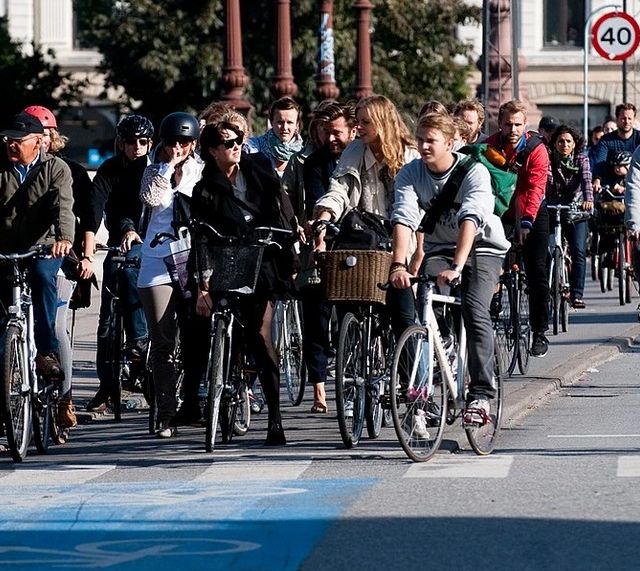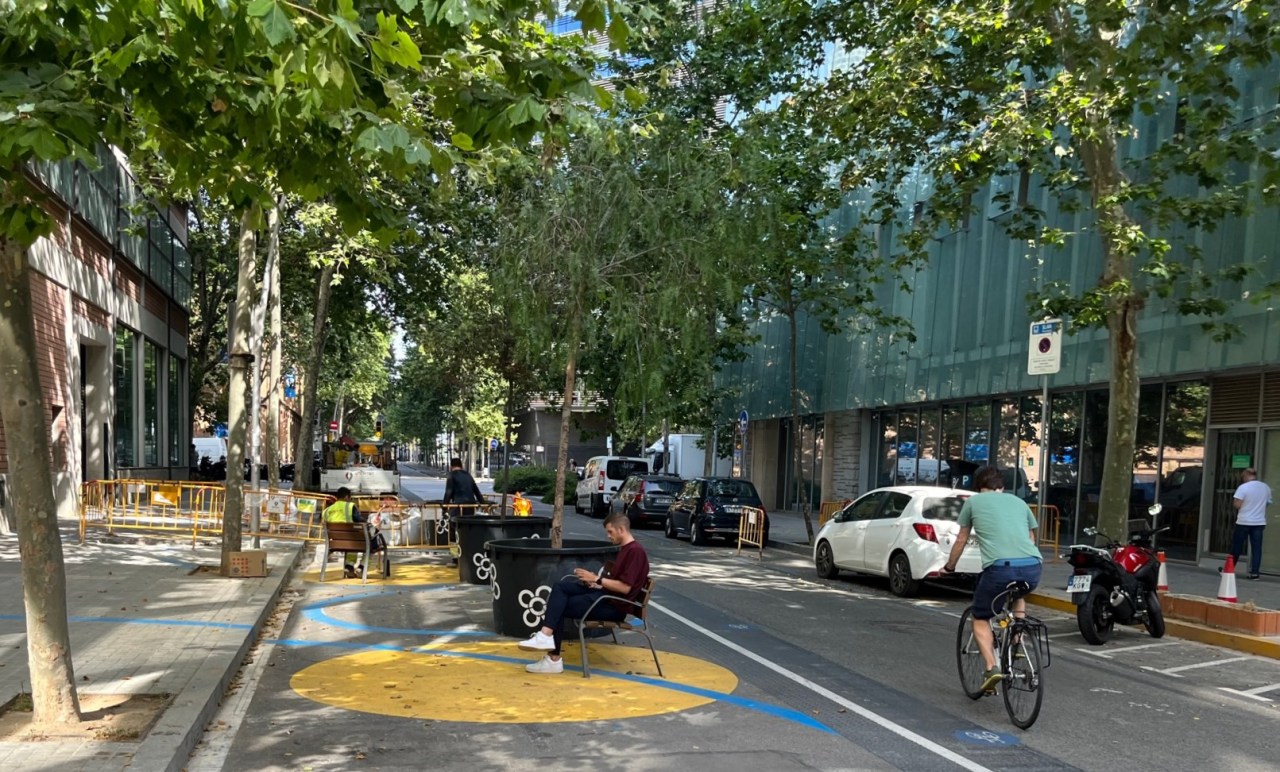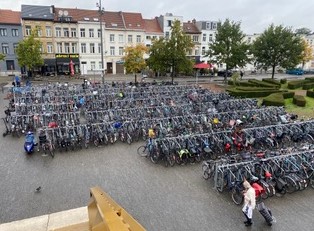All religions have their pilgrimages to the promised land. Muslims go to Mecca. Jews, the Western Wall. Catholics walk the Camino de Santiago. Baseball fans head to Cooperstown. And Cyclists… well, we go to Amsterdam. And going there is just part of the process to fulfill that faith.
So, at age 63, I finally went to the Netherlands. Not to peer into the darkness of a Rembrandt, marvel at the brush strokes of a Halls, or walk the red-light district, which I did. But to bike the canals and roads of Holland. To learn how an entire society relies on the lowly bicycle to save the planet: by riding a bike, not driving a car for simple transportation.
What I learned is: they don’t. There are plenty of cars, highways and parking lots all over the Netherlands. The war on cars was lost; cars won. And, while there may be no C. A. R. in the word WIN, there certainly is in the word TRAFFIC. Amsterdam has traffic, plenty of it, but what I saw is that bicycles are an integral part of that traffic. I saw a city that has carved out space to allow and respect maybe ten to twenty percent of the population to choose how they run their daily errands: shopping, taking kids to school, commuting to work, or going out on the town with friends. They all - women in heels, men in suits, children and octogenarians - co-exist on two wheels with their four-wheeled foes.
Actually foes is the wrong word, there is no bike vs. car mentality in Amsterdam. People seem to understand that they are free to choose the best transportation tool for the job at hand, and sometimes that is a car, or a truck, or a train, but - more often than not - a bicycle is perfect for the job. No reason to spend a gallon of gas to buy a gallon of milk. Some options are more expensive than others, but they are all safe.
The number one reason more people do not ride bikes in the U.S. is because they do not feel safe.
Granted, European cities like Barcelona, Paris, and Amsterdam were already beautiful. But what is it that made them so amazing? For a start they were built at human scale, before the car was king, just like much of New York and Boston and even Los Angeles, if you follow LAExplained on Instagram. But what keeps them beautiful? Unlike so many American cities, they are reverting back to that human scale. A walkable, bike-able streetscape that looks a lot like Disneyland’s main street. Car free, but without the $159 admission fee.
On vacation most of us choose to go to car free or car-lite destinations. No one chooses a trip to strip malls, suburbs, or stroads for the family getaway.
I was born and raised in Michigan in the 1960s. Motor oil was in my blood. Oldsmobile and Motor Wheel were our hometown employers. Before the age of 16, I lived on my bike. After that, I lived in my car. I was the youngest of three boys, so I got the hand-me-down Pontiac Tempest. A sweet car actually, but at heart I am a cyclist. I lived in New York City for almost ten years… with a car (stupid) but at heart I am a cyclist. And for the past thirty years I have lived in Los Angeles, the car capital of the world. I own two cars, but at heart I am a cyclist.
So after trading in my spandex for regular riding clothes and following the climate change-intensified heat wave of September 2022, I boarded a plane to take my communion and pledge my allegiance and faith to two wheels.
My pilgrimage started in Barcelona, a city I have been going to regularly since 1993, when I did the movie Barcelona. The Olympics were held there in ’92, so the city was primed for business, and the streets showed it. Cars and motorbikes were everywhere… and the noise, God the noise. Barcelona was rated the noisiest city in Europe. But it was a very exciting city with beautiful architecture, amazing food, and lots of traffic. We thought that was just the price one paid for a busy, cosmopolitan, almost-21st-century city.
This trip, 29 years later, showed a different, quieter, calmer place. Starting with the Aerobús which whisked me from the airport to the city center, Plaza de España, for a cheap six euros- basically six dollars. That shamed the $70 I paid for the cab ride home from LAX on my return. This is where urban planners (which I am not) add the disclaimer and say European cities are not Los Angeles; that is true, but last I checked Los Angeles does have buses and they do run on surface streets. So… they aren’t that different. They just utilize BRT lanes. Paul Koretz, the longtime Los Angeles City Councilmember, didn’t even fight for a quarter mile bus lane through Westwood connecting UCLA and the Westside to the Eastside. Nor did he approve Uplift Melrose, or even study bike lanes on Westwood Blvd. into UCLA.
My first realization that there is no political leadership in Los Angeles.
Getting off the bus in Barcelona, the first thing I noticed was the lack of noise. It wasn’t quiet per se, but not overtly loud either. The traffic was calmer and that seemed to effect the noise level. Plaza de España is still a busy, hectic crossroads, but in the intervening years the city has allocated one lane on many of its streets for alternate forms of transportation, mainly bicycles and scooters, but also wheelchairs.
Many leaders in Southern California cities voted to ban scooters when they first appeared - a very shortsighted and reactionary decision. (It’s like the story of the sailor whose ship was sinking, and when a helicopter comes to save him he says, “no thanks, my God will save me.” He drowned. When he got to the pearly gates he asked St. Peter why God had let him drown. And St. Peter said, “God sent you a helicopter, you moron.”) Bicycles and scooters could very well be God’s helicopter to save us from our traffic and climate problems. But we have to give them a chance.
The big infrastructure change that everyone talks about in Barcelona are the “super-blocks.” Barcelona is a grid city and cars are everywhere. But a super-block is a nine-city-block conglomerate that impedes cut-through traffic. Cars and parking are still allowed, but one can not drive straight through. Thus, these streets are calmer, quieter, cleaner, and safer, and as a result the pedestrian life blossoms. By taking traffic off the streets, these super-blocks have created space for children to play and neighbors to connect. It's Jane Jacobs' eyes on the street.
It is a game changer, much like Britain’s project, “20 is Plenty,” where neighborhood streets are reconfigured so car traffic cannot physically go faster than 20 kilometers an hour - bout 12.5 mph. A safe speed for cars and people to co-exist. Saves lives, makes the hood safer, cleaner, and quieter. Win-win.
After Barcelona, we trained to Paris. The high-speed train, very fun. No trip to the airport - just catch the train in the middle of one city and get off in the middle of the next. The saying goes: Paris is made for lovers, but it is also made for walkers—maybe that is why it is so good for lovers. Walking in Paris is romantic. It is also safe. I don’t know about muggings, but it is safe from traffic violence. Mayor Anne Hidalgo has staked her political career on bringing Paris Back to the Future by creating safe street spaces for Vélib, the city’s bike-share program, and so many other forms of alternate transportation. I did not take a cab or an Uber once in Paris. I ate like a pig, drank like a fish, and still lost weight. Gold's Gym ain’t got nothing on Paris.
But it was not always this way. Post World War II, Paris rebuilt itself around the car and it remained that way for fifty years. And, like in the states, political battles over change are not easy, but the Parisian leaders had the backbone to implement infrastructure changes and not back down to the loud, nimby voices. (In my neighborhood the nimbys who complain about the status quo also complain about any solutions to those problems. They just like to complain.) It seems to me that the leaders in Paris gave the street changes time to work. As the voice in the cornfield in a Kevin Costner movie says, “if you build it, they will come.” There is a learning curve to change and we have to... give peace a chance. That’s all I’m saying.
From Paris we trained to Amsterdam. We walked from the train station to our hotel, in the rain, it was so close and easy to get to. Bikes and bike parking were everywhere. Cargo bikes, electric bikes, children’s bikes, and of course the ubiquitous black Dutch bikes. Some people rode with rain gear, others used umbrellas, but unless it was pouring people continued to go about their business on their bikes. Also what’s great about Amsterdam: everyone speaks English. None of this parlez vous anglais?
As you can tell by my mastery of the French language, I’m probably not the one to discuss the history of Amsterdam, the architecture or the art, but I can discuss the bikes… and maybe the beers. Biking in Amsterdam is a pure pleasure. On busy car-filled roads there are completely separated paths for bikes. On streets where cars go say 20 mph there are protected bike lanes, and on small neighborhood streets in the canals bikes and cars share the same space safely because they are both going about the same speed, eight to 15 mph. Drivers know they are guests on these streets. There is little animosity between car drivers and bike riders, partly because many drivers are also riders and many riders are also drivers. This has created an environment that is safe, comfortable, and fun to walk or bike in.
Bicycles travel at the perfect speed of observation. You see more and feel your surroundings better from atop the bike than from behind the wheel. I did not see one traffic-related crash on this trip; no one even talked about it. Not that it never happens, but it doesn’t happen very often and seldom results in death for the pedestrian or bike rider. (Six people died while biking last year in Amsterdam, 42 in L.A. County.)
Comparing statistics from one country to the next is often apples to oranges, but it’s pretty clear, one is more likely to die from murder in Los Angeles than by cycling in the Netherlands.
While death is the ultimate statistic, an immediate benefit of creating safe streets is what it does for life on that street. More people are out and about shopping, walking, having coffee or lunch. It becomes a self-fulfilling cycle: the fewer cars, the more people; the more people, the fewer cars.
Time and again our civic leaders turn their backs on street improvements here in the U.S. because they are ignorant of the economic benefits and are scared of bike-lash. But cities like Barcelona, Paris, and Amsterdam (not to mention New York, San Francisco, and even Long Beach) are showing us the way if we are willing to look, listen, and learn.
Before returning home to southern California we went to Ghent and Bruges, where the benefits of having transportation choices were even more profound.
But what really shocked me was that one of my first nights back in L.A., a friend and I rode from West Hollywood to DTLA to see a play at the Taper. Never had I been so scared riding a bike in Los Angeles in my life. I had been lulled into a false sense of security after enjoying the relative safety of Dutch roads. Now, riding along Sunset Blvd - which has a bike stripe by the way - I was literally taking my life into my hands by choosing to bike and not drive. In Los Angeles not everyone has the option to drive, and as I said earlier I have two cars sitting in the driveway. I could have driven to the play (The Search for Signs of Intelligent Life in the Universe by Jane Wagner with Cecily Strong. It was very good by the way. Worth dying for? I’m not so sure). I could have driven and been part of the climate and traffic crisis.
So the big takeaway from my pilgrimage to the Netherlands is that we here in America are not as free as we think. Because of obsolete road design and ignorant and feckless political leaders, we are not free to choose the best transportation option to suit our needs - a decision we encounter multiple times daily. We are forced by our governments, local, state and federal to pay for and drive cars that foul our air with exhaust and noise, make our neighborhoods dangerous places to walk and literally divide our communities.
My hope is more Americans will travel to cities like these and see for themselves how they are leading the way to create healthy, sustainable ,and fun places to live and work. I returned home not an apostate to the belief in the power of the bike, but an apostle ready to spread the message that two wheels good, four wheels bad.
There are some great videos that show many of the improvements that Amsterdam, Paris, and Barcelona have added and at Streetfilms. Start with: Revisiting Donald Appleyard’s Livable Streets, Paris vs NYC: What It’s Like to Bike, and Barcelona’s Superblocks: Change the Grid, Change Your Neighborhood.
Oh… my takeaway from the play that night: Los Angeles… Soup. Amsterdam… Art.
Taylor Nichols is an actor and producer. He lives in Los Angeles.









